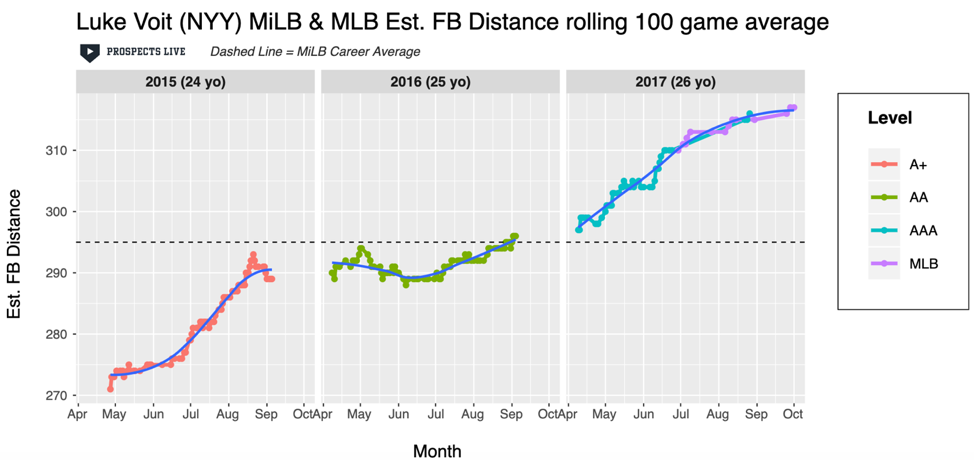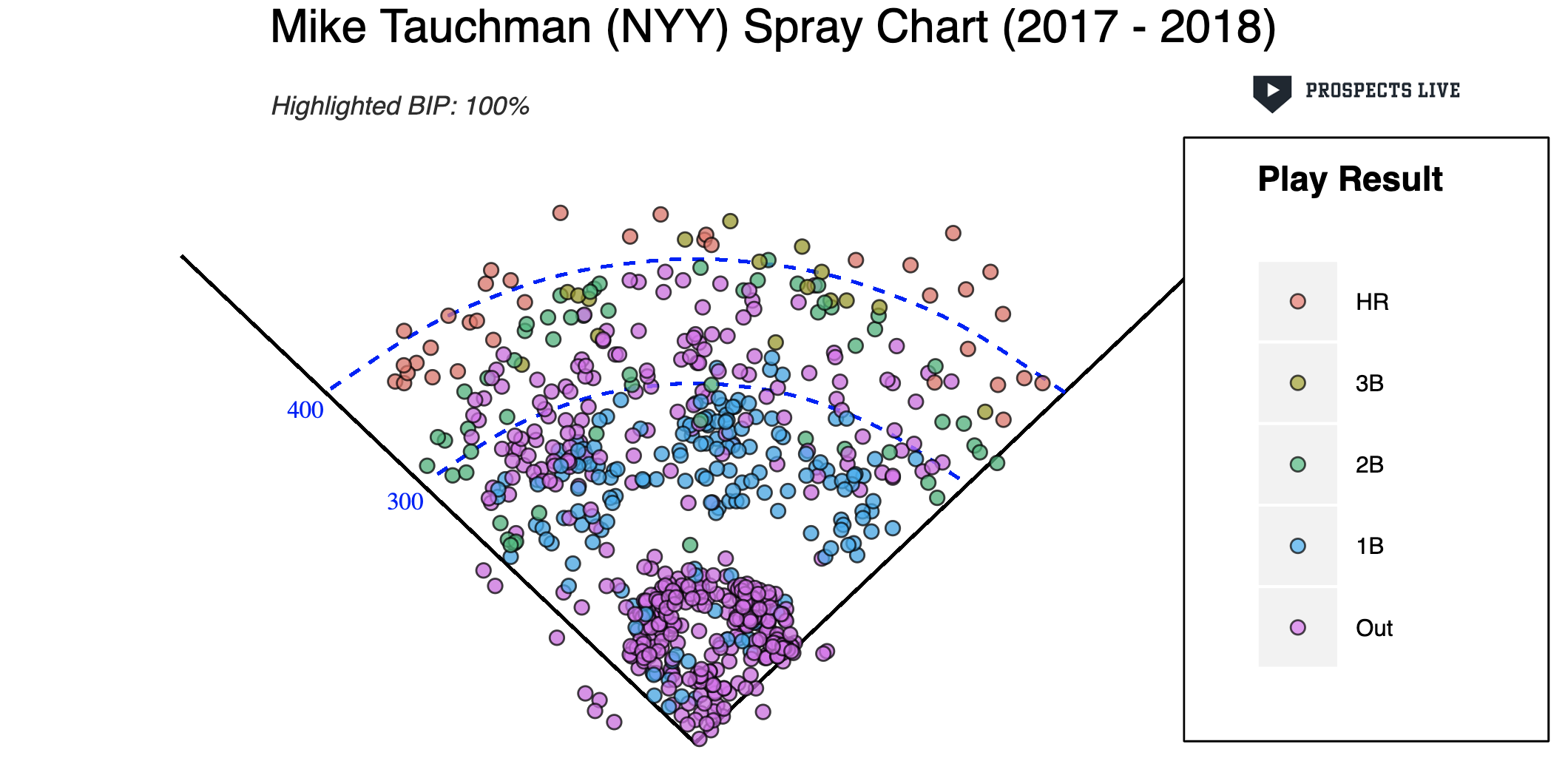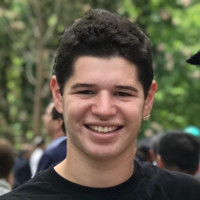When Brian Cashman made the splash of the winter signing Gerrit Cole, it seemed emblematic of the New York Yankees’ return to its “evil empire” antics. There’s no need to reminisce about all the times that the Yankees outbid their smaller-market rivals in order to help build its empire. Early in Cashman’s general manager career, he was inclined to carry on the Steinbrenner mantra: “If you have the money, spend it.”
Over the last decade, however, Cashman, has built the organization with a disparate methodology in comparison to the assemblance of past Yankees rosters. The Cole signing should not be considered a return to these former methods, but rather a signing to move the needle. Cashman has made countless deals in recent seasons to help bolster the Yankees farm system and, more importantly, their major league roster. In particular, there are four savvy trades that stick out. Cashman and the Yankees front office orchestrated these deals while looking for certain characteristics in prospective players. The overlooked value they ultimately acquired was likely due to two possible factors: the general managers became disconcerted about their surplus of depth at each position, a “surplus bias,” and also management questioned each of these prospects’ role on the team’s future roster. This was the case for Didi Gregorius (trade in 2014), Aaron Hicks (trade in 2015), Luke Voit (trade in 2018), and finally, Mike Tauchman (trade in 2019).
Even though Gregorius signed with the Phillies this winter on a one-year deal, abandoning his spot as Derek Jeter’s long-term successor, he added extreme value as the Yankees’ shortstop for the past five seasons. When Jeter retired in 2014, Cashman had to fill a position that had been undergirded by the team’s legend since the beginning of his GM tenure. This was no easy task for Cashman, and fans were not thrilled when the Yankees traded for Gregorius to be Jeter’s replacement. At the time, Gregorius had hit a total of 13 home runs during his minor league career and failed to produce for the Diamondbacks when given an opportunity. He was touted as a good fielder with decent speed but rarely got on base due to his low BB%. So, what did Cashman and his analytics department see in Gregorius’ bat that could make him a worthy heir to the greatest shortstop in Yankee history?
In his minor league career, Gregorius averaged one home run per 96 plate appearances. But there was an inconspicuous factor leading to this unimpressive ratio: Gregorius hit a significant amount of fly balls to deep right field, and due to minor league stadiums having surprisingly deeper right fields than Yankee Stadium, many of those fly balls resulted in doubles or flyouts. In fact, Gregorius hit 28 balls in play that would’ve resulted in a home run to the right field short porch (314 feet). This boost would’ve cut his HR/PA ratio in more than half and skyrocketed his minor league home run total all the way to 31. Throughout Gregorius’ minor league career, he always had a knack for hitting fly balls. His fly-ball rate was approximately 37%, which was much greater than the average major leaguer during that time period. These power statistics must have caught Cashman’s eye, demonstrating that Gregorius had legitimate slugging potential. The challenge would be how to tap into it.
When the Yankees front office acquired Gregorius, they knew he was adept at hitting fly balls to varying parts of the outfield and wasn’t a conventional contact-hitting shortstop. Even though Gregorius was capable of hitting flyers to left and center field, his fly balls went drastically further when he pulled them to right field. The Yankees coaching staff recognized that to maximize his power, Gregorius would need to adjust his swing to produce more pulled balls. The validation came as his pull percentage skyrocketed from 32.9% with the Diamondbacks to 47.3% for the Yankees in 2019. The staff’s intuition had been on the mark, and it effectively unlocked Gregorius’ slugging potential via pulled home runs.
A tweet by Baseball Savant’s Daren Willman encapsulates this trend:
All of Didi Gregorius home runs since 2015… 👀 pic.twitter.com/KMPFBITYsx
— Daren Willman (@darenw) May 3, 2018
Cashman successfully filled the shortstop position without overpaying for an expensive free agent or even trading for a big-name shortstop, but instead with an unidentifiable struggling minor leaguer who eventually accumulated a substantial 15.7 WAR over his five seasons. This route was the antithesis of “evil-empire” ideals, and also initiated Cashman’s panoply of trade successes.
At age 18, Hicks was proclaimed a “true five-tool player” by Perfect Game. It was no surprise when the Twins made him the 14the overall pick in the 2008 draft. Like many other prospects before him, while entering the minor leagues that young and with such large expectations, it can be challenging to perform. Ultimately, Hicks failed to live up to his five-tool status. After struggling with his power stats (ISO power never reached above .175), and inconsistent contact, the Twins had lost some hope in its once first-round darling. By age 23, Hicks had flashed three of the tools he was acclaimed for: speed, throwing power, and fielding. Although not one of the five tools, he’d always demonstrated a great plate discipline.
Seven years after that five-tool proclamation, at age 25, Hicks looked primed to put all of his tools into play. He started the season in Triple-A and was slugging with a .201 ISO, and retained a 174 wRC+. Midseason, Hicks received a call from the Twins to join their major league roster. Hicks put up middling stats (96 wRC+) with his golden opportunity (97 games), and once again, it looked like the Twins had lost hope in its outfielder. A 96 wRC+ is slightly below average but by no means exemplifies a bad hitter. But the Twins believed that they had younger and better replacement options, and turned to their farm system, where they had four top hitting prospects (Max Kepler, Byron Buxton, Eddie Rosario and Miguel Sanó) who could play outfield. The Twins GM, Terry Ryan, realized the tradeoff from Hicks’ position was stacked with young talent, so he decided to start looking into trade options for the talented outfielder.
Noticing that Hicks was undervalued due to the Twins’ surplus of positional depth, Cashman made moves, and during the 2015 winter meetings, he and Ryan consummated the trade. Cashman saw loads of potential in Hicks, claiming he was a “young, exciting talent” and an “everyday player.” In those 97 games with the Twins, Hicks looked like more than a backup center fielder. Even though he hit only 11 home runs, had he been playing at Yankee Stadium, the short porch would’ve granted him five more dingers to bring that total to 16. With his power numbers turning a corner, and already being one of the best defensive center fielders with a great eye at the plate, the Yankees knew this was a high upside move. The team found its starting center fielder by giving up its third-string catcher, J.R. Murphy, who never became more than a Triple-A depth.
Voit was a local Missouri kid when the Cardinals took a flyer on him in the 22nd round. He had played four years at Missouri State College and was already 22 years old entering the minors. In Voit’s first three years in the minors, he hit with mediocre power numbers, and a decent average, but was a poor fielder. At age 25, he was still in A-ball. Voit’s career path looked similar to a typical 22nd-rounder, but then he started making major adjustments to his swing. In an article from FanGraphs, Voit said, “For a while I had a big leg kick. [But] it felt like pitchers were quick-pitching me. That’s something I struggled with. So, I transitioned into a smaller leg kick. Then I got to Double-A and realized I needed something to get my swing on time, which is why added the leg swing.” As a result of the swing alteration, Voit’s fly-ball distance increased dramatically.

These adjustments to his lower body had an insurmountable impact on his power. His fly balls were carrying further, which led to more extra base hits. His ISO power skyrocketed from .134 in 2015 all the way to .242 in 2017. This trend is clearly paralleled by the graph above. In 2017, Voit was in Triple-A and was absolutely destroying the ball. He retained a 152 wRC+ with a .419 wOBA in 307 plate appearances. Despite never being a top-30 prospect for the Cardinals, he forced his way onto the team midseason. That season, Voit played 31 games at first base, platooning with Matt Carpenter and José Martinez, but because of his small sample size, Voit struggled to maintain his Triple-A numbers. After the season, the Cardinals signed All-Star Paul Goldschmidt to fill their first base job. With Voit lacking defensive versatility, he no longer had a spot on the roster.
But Voit continued to mash the ball in Triple-A, where he maintained a .392 wOBA. The Cardinals general manager fell victim to a “surplus bias,” similar to the Twins GM. Enter Cashman. With the Yankees’ first base position in flux, Cashman saw a ripe opportunity to strike and consummated the deal to acquire Voit that summer. The Yankees gave up Chasen Shreve, who was let go not long after, and Giovanny Gallegos, who materialized into a solid reliever. The Yankees not only got Voit, but also received international signing bonus money—a high-value commodity.
Cashman later said, “We had been on Luke Voit the last two years. We noticed he was someone that was putting up really strong offensive numbers in the minor leagues. We thought there was some realness to his stuff.” As Cashman predicted, Voit became an instant offensive contributor and should retain the Yankees 2020 first base job. Although Cashman is the one pulling the strings, he credits many of his front-office mates, including Kevin Reese (the team’s scouting director), Michael Fishman (assistant general manager), David Grabiner (director of quantitative analysis) and Matt Ferry (director of baseball operations), for making the deal happen.
Tauchman was drafted in the 10th round at age 22 by the Colorado Rockies. During his first four seasons in the minors, he never hit more than five home runs in a single season. He did, however, demonstrate stellar plate discipline and fielding ability. During the 2016 winter, Tauchman was 25 years old and imprisoned in Triple-A. Unless he made a significant power improvement, his major league aspirations looked to be dissipating. Justin Stone, the founder of Elite Baseball Training, started working consistently with Tauchman to adjust the kinks in his swing. He instructed Tauchman to keep his hips intact and reduce the tempo in his lower body. By keeping his lower-body motion uniform and continuing to wait for the ball to come through the zone, he was able to unlock his power. This adjustment allowed Tauchman to utilize his 6’2″, 220-pound frame to his benefit, slugging the ball from line to line. A large majority of Tauchman’s at-bats during the 2017 and 2018 seasons were in Triple-A, where he slugged a total of 36 home runs and retained a 146 wRC+, which was an astronomical improvement over his other seasons. His spray chart looked like a work of art and demonstrated potential power to all fields.

But during that time, Tauchman only received 69 plate appearances for the Rockies. He deserved more chances because of his outstanding Triple-A performance, and also at the time, there was not one Rockies outfielder who had a WAR over 1. It’s possible the Rockies front office was biased by his age and didn’t think a 27-year-old prospect could bring added value to their playoff push. On the other hand, Cashman had traded for Voit, also a 27-year-old prospect in 2018, so clearly the Yankees front office didn’t consider the age of a prospect to be an impeding factor on future success. Right before spring training in 2019, Cashman made the push to trade for Tauchman, and eventually completed the deal for Mike on March 24. He traded away Phillip Diehl, who remains in the Rockies farm system and was demoted from Double-A to Triple-A—quite the juxtaposition with Tauchman, who carried the Yankees midway through the season and helped guide them to 103 wins. Tauchman had 128 wRC+ in almost 300 plate appearances and was one of the few “unshiftable” lefty sluggers in MLB.
Brian Cashman
While making these deals, Cashman sought out each players’ true value while silencing all the extraneous factors, such as ballpark configuration, positional depth and even their age. The rest of the league should take notice of Cashman’s ingenious moves and in the future, when he deals for a low-value prospect, they’d be smart to recognize that there’s a method behind the madness. Cashman and the Yankees will likely be a dominant force in 2020. Many will credit the Cole signing, but don’t overlook Hicks, Voit and Tauchman as integral pieces of this championship-caliber team.
(Gregorius- Photo by Jeff Chevrier/Icon Sportswire) (Voit- Photo by Mark Goldman/Icon Sportswire) (Hicks- Photo by Frank Jansky/Icon Sportswire) (Tauchman- Photo by Mark Goldman/Icon Sportswire) | Featured Graphic Designed by James Peterson (Follow @jhp_design714 on Instagram)


Great insight in this article about Yankee front office genius. I hate seeing this stuff. So much easier just to hate the Yankees for spending money.
Thanks Joel! Agreed, it’s much harder to hate the Yankees when they are building their farms system and making low value trades